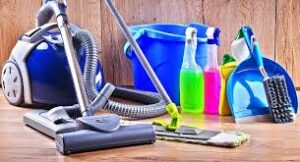How to Maintain Your Vacuum for Long-Lasting Performance
Vacuum cleaners are an essential tool for maintaining a clean and healthy home. Whether you own a top-of-the-line model or a budget-friendly option, proper maintenance is key to ensuring your vacuum’s long-lasting performance. Regular care not only extends the lifespan of your vacuum but also helps it perform at its best, saving you time and effort in keeping your home spotless.
In this guide, we’ll explore practical steps and tips to maintain your vacuum cleaner, ensuring it stays efficient for years to come.

1. Regularly Empty the Dustbin or Replace the Bag
One of the simplest yet most crucial maintenance tasks is to keep the dustbin or bag clean. A full dustbin or bag reduces suction power and makes your vacuum work harder.
Steps to Follow:
- For bagless vacuums, empty the dustbin after every use or when it’s about 75% full.
- For bagged vacuums, replace the bag as soon as it’s full or emits a musty odor.
Pro Tip: Use high-quality replacement bags to prevent leaks and maintain performance.
2. Clean or Replace the Filters
Filters trap dust, allergens, and debris, ensuring clean air is expelled back into your home. Over time, filters become clogged, affecting the vacuum’s efficiency.
Maintenance Tips:
- Check your vacuum’s filters monthly.
- Wash reusable filters with warm water and mild soap; let them dry completely before reinstalling.
- Replace non-washable filters every 3-6 months or as recommended by the manufacturer.
Why It Matters: Clean filters enhance suction power and improve air quality, making your vacuum more effective.
3. Inspect and Clean the Brush Roll
The brush roll, or beater bar, is essential for agitating dirt and debris, especially on carpets. Hair, string, and fibers can wrap around the brush, hindering its performance.
Steps to Maintain:
- Turn off and unplug the vacuum.
- Remove the brush roll and cut away tangled hair or debris using scissors.
- Check for worn or damaged bristles and replace the brush roll if necessary.
Pro Tip: Opt for a self-cleaning brush roll vacuum if frequent maintenance is a concern.
4. Check the Vacuum Belt
The vacuum belt drives the brush roll and plays a critical role in cleaning performance. Over time, belts can stretch, crack, or break.
How to Inspect:
- Remove the brush roll cover and check the belt for wear and tear.
- Replace the belt if it appears loose or damaged.
Replacement Frequency: Most belts need replacing every 6-12 months, depending on usage.
5. Clear Blockages in Hoses and Nozzles
Blockages in the vacuum’s hose or nozzle can severely reduce suction power.
Steps to Clear Blockages:
- Detach the hose and inspect it for clogs.
- Use a long, flexible brush or a coat hanger to remove debris.
- Check the nozzles and attachments for any obstructions.
Pro Tip: Regularly inspect these components, especially if the vacuum’s suction seems weaker than usual.
6. Keep the Exterior Clean
Dust and dirt can accumulate on the vacuum’s exterior, vents, and wheels, affecting its overall efficiency.
Cleaning Tips:
- Wipe the exterior with a damp cloth to remove dust and grime.
- Use compressed air to clean vents and crevices.
- Check and clean the wheels to ensure smooth movement.
Why It Matters: A clean exterior prevents dust from entering internal components and keeps your vacuum running smoothly.
7. Store Your Vacuum Properly
Proper storage protects your vacuum from damage and ensures it’s ready for use when needed.
Storage Tips:
- Store your vacuum in a cool, dry place away from direct sunlight.
- Avoid wrapping the cord too tightly to prevent damage.
- Keep attachments organized and within reach.
Pro Tip: Wall-mounted vacuum docks are ideal for compact storage and easy access.
8. Schedule Professional Maintenance
For high-end models or vacuums with complex features, professional servicing can be beneficial.
When to Consider:
- If the vacuum’s performance declines significantly.
- For annual tune-ups to inspect and replace critical components.
Benefits: Professional maintenance ensures your vacuum operates at peak performance and can identify potential issues before they escalate.
9. Use Your Vacuum as Intended
Using a vacuum for tasks it’s not designed for can lead to damage and reduced lifespan.
Dos and Don’ts:
- Use appropriate attachments for different surfaces.
- Avoid vacuuming liquids unless your model is designed for wet cleaning.
- Don’t pick up large, sharp objects that can damage the vacuum.
Pro Tip: Read the user manual to understand your vacuum’s capabilities and limitations.
10. Invest in High-Quality Replacement Parts
Using genuine replacement parts ensures compatibility and maintains your vacuum’s performance.
Parts to Replace Periodically:
- Bags and filters.
- Belts and brush rolls.
- Hoses and nozzles if damaged.
Why It Matters: High-quality parts reduce wear and tear on the vacuum, extending its lifespan.
Conclusion
Maintaining your vacuum cleaner doesn’t have to be a daunting task. By following these simple yet effective tips, you can ensure your vacuum remains a reliable cleaning companion for years to come. Regular maintenance not only enhances performance but also saves you money in the long run by avoiding costly repairs or replacements.
Remember, a well-maintained vacuum is not just an appliance but an investment in a cleaner, healthier home. Take the time to care for your vacuum, and it will reward you with exceptional performance every time you use it.





